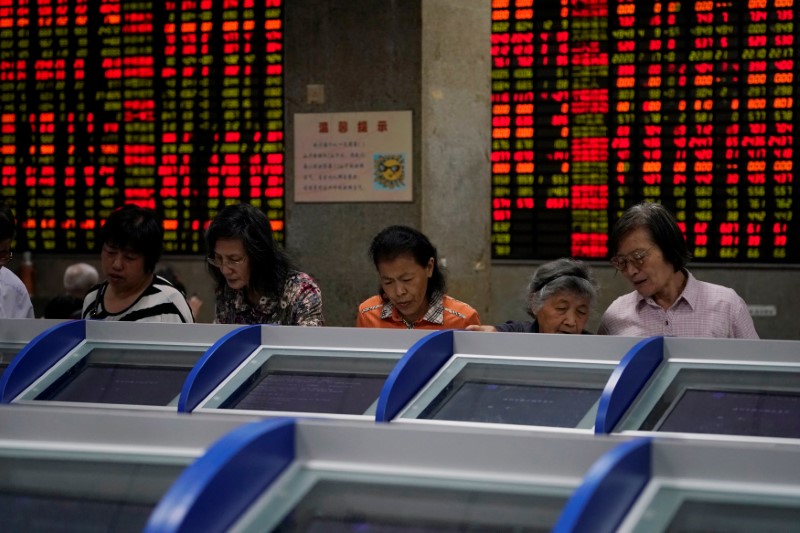 © Reuters. Investors look at computer screens showing stock information at a brokerage house in Shanghai
© Reuters. Investors look at computer screens showing stock information at a brokerage house in ShanghaiSHANGHAI (Reuters) – Chinese stocks, on track for their worst month in years, erased early losses on Thursday but the yuan
The benchmark CSI300 Index () and the Shanghai Composite Index () both dropped by more than half a percent in early trade. At the midday break, the SSEC was up 0.2 percent and the CSI300 by 0.3 percent.
The Shanghai benchmark has fallen about 9 percent in June, and it is on course for the worst month since January 2016, when it tumbled 22 percent.
The spot YUAN market
In each of the past six days, the yuan has slid, taking it to the lowest levels since December 2017.
The yuan has dropped 3.1 percent in June, more than in any other month since 1994 when China unified the market exchange rate.
“The market volatility in China is being driven by a combination of factors – Sino-U.S. trade tensions, concerns over corporate bond defaults in China and uncertainties to the growth outlook,” Tai Hui, J.P. Morgan Asset Management’s chief market strategist for Asia-Pacific said in a note.
“Worries over corporate bond defaults are arguably the most dominant factor at this point, since the prospects of higher USD interest rates and subsequent USD strength are raising concerns that companies who have been heavy USD debt issuers could face challenges to service their debt, repay or refinance.”
Chinese 10-year treasury futures for September delivery
A government think-tank report that appeared briefly online said that China should be wary of any financial panic stemming from uncertainties, such as bond defaults, tight liquidity and trade frictions with the United States.
Fusion Media or anyone involved with Fusion Media will not accept any liability for loss or damage as a result of reliance on the information including data, quotes, charts and buy/sell signals contained within this website. Please be fully informed regarding the risks and costs associated with trading the financial markets, it is one of the riskiest investment forms possible.
Source: Investing.com





























